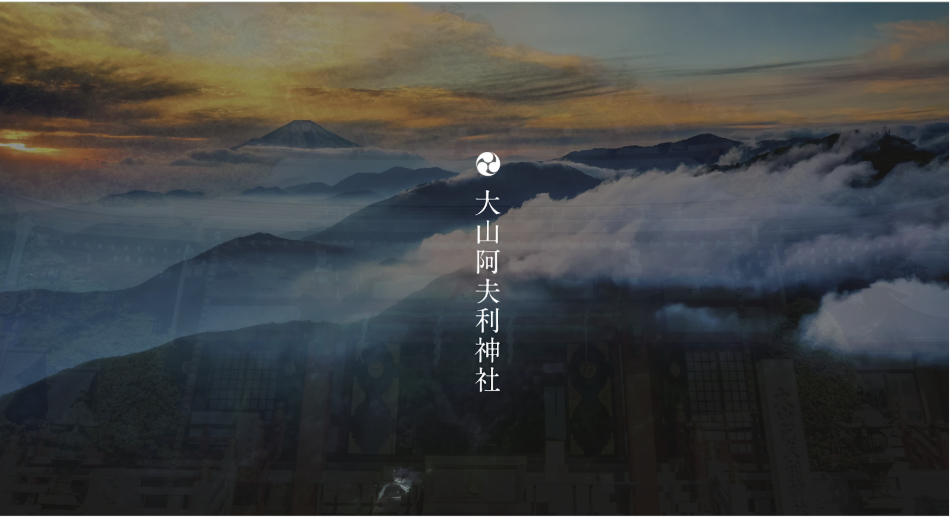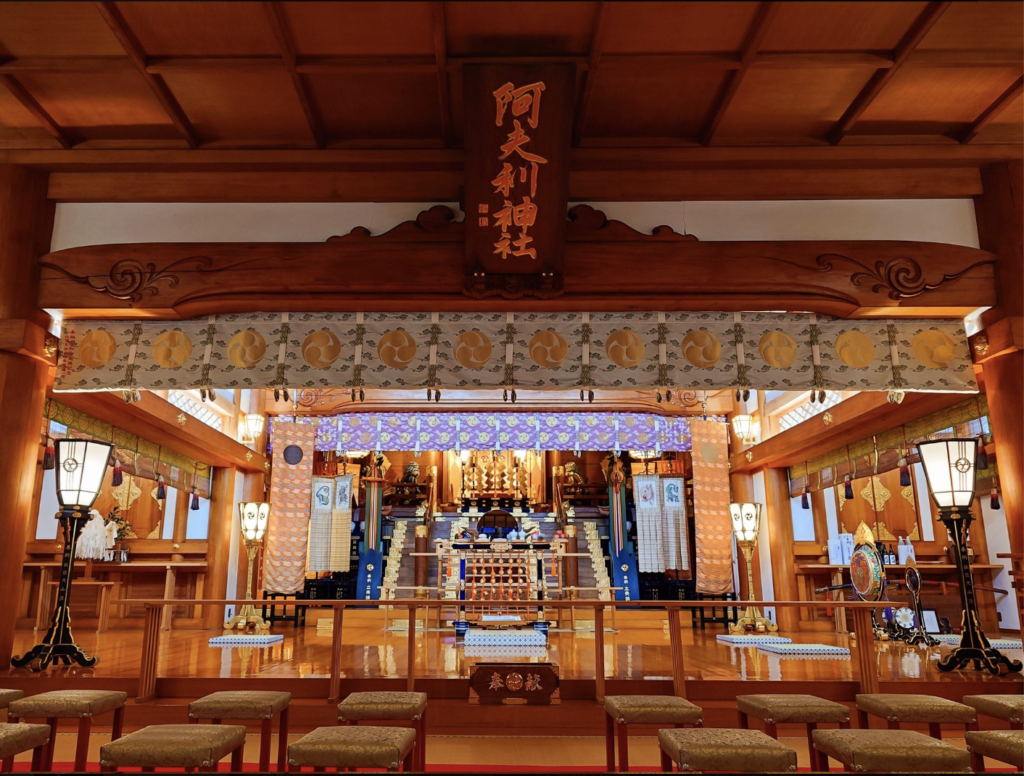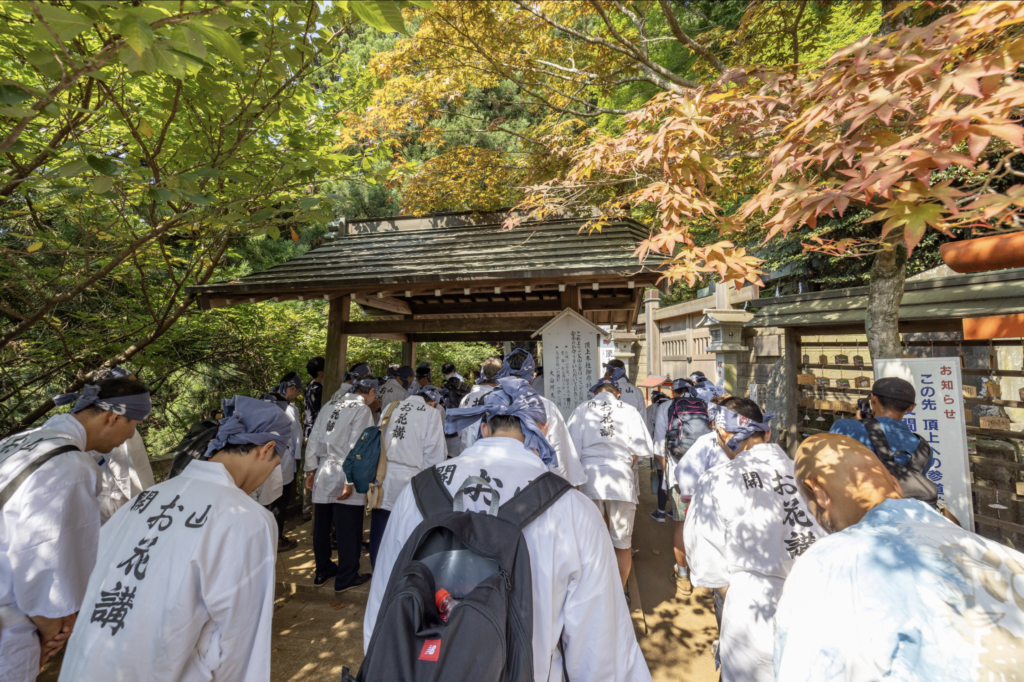The Japanese and Mt.Oyama
It takes about 1.5 hours by public transportation from Shinjuku, Tokyo. Did you know that there is a very mysterious and unique place there?
It is the Oyama Afuri Shrine, located in Isehara City, Kanagawa Prefecture.
Located halfway up the naturally rich Mt.Oyama (1,252 meters above sea level), it has long been the object of mountain worship and a renowned sacred site.
This location, so close to Tokyo, has always attracted attention in accordance with the times and has formed a truly unique culture.
Let us take this place as a theme to unravel a little of the unique story of the Japanese people’s successful coexistence with the gods.

The Spirituality of the Japanese People
First, let me talk about the spirituality of the Japanese people.
Japan is said to have a very unique spirituality in the world.
At the root of Japanese spirituality is the animistic concept of eight million gods.
The word “eight million” means “uncountably many.
Japanese people not only worship nature, such as mountains, rivers, plants, and trees, but also have an underlying belief that gods reside in the tools, dolls, and buildings they usually take good care of, and even in people who have passed away. In Japan, “kami” is not a singular, absolute entity, but rather an omnipresent entity that is deeply rooted in the culture and daily life of the Japanese people and still forms the basis of their values and behavior today.
Therefore, although there are many shrines in Japan, the deities enshrined in them are diverse.
Some shrines enshrine gods of nature, such as mountains, rocks, and stones, while many others enshrine gods who are believed to reside in Japanese swords, phallic hair, and other objects.
Although there are many theories, it is said that there are more than 88,000 shrines throughout Japan.
We believe that there are as many gods as there are people’s thoughts and feelings, and that they are always watching over us.
Incidentally, Oyama Afuri Shrine enshrines a mountain deity called Oyamatsumi no Kami.
This deity is said to be the father of Kibana Kaiyahime-no-Mikoto, the deity of the World Heritage site Mt.Oyama.
The Origins of Oyama Afuri Shrine

The history of the Oyama Afuri Shrine is very old, dating back to about 2,200 years ago. The name of the shrine, “Afuri,” is said to be a metamorphic form of the Japanese word for “rainfall,” and has long been worshipped as a deity to pray for rain and a bountiful harvest. Oyamatsumi no Kami, enshrined at the shrine, is a god of nature who is said to be the general ruler of the mountains.
Oyamatsumikami was worshipped as the god of water and fields, and was especially important to people engaged in agriculture.
It is known that the shrine already existed around 792 (Heian period) as a shrine that was respected by the imperial court and the warrior class. This is because the name is mentioned in an old Japanese document dated 927. It is known that the shrine existed as a state-recognized shrine from that time onward.
During this period, the shrine was also associated with Shugendo, and many ascetic practitioners gathered at Oyama.
Shugendo is a religion and practice system unique to Japan. It means to attain special power or enlightenment through mountain asceticism, and its purpose is to hone one’s spiritual powers while becoming one with nature. Oyama, with its beautiful yet harsh natural environment, seems to have been the perfect place for ascetic practices.
Formation of a unique culture and prosperity in the Edo period
Around 1200 (Kamakura period), it became a popular place for warriors. It is said that famous warlords such as Minamoto no Yoritomo prayed for victory in battle.
As a remnant of those days, a custom called “Osame-tachi” (the ritual of delivering a sword) still exists at Oyama Afuri Shrine. This is a traditional ceremony in which worshippers dedicate a sword to the shrine and pray for safety, and it is believed to have originated with the actions of the warlords of this period.
By the Edo period (1603-1867), the custom of common people worshippers also imitating the warriors and dedicating a wooden tachi (sword) to the shrine was established.
It is said that the people of Edo were very flamboyant and vain. Therefore, they gradually began to bring bigger and more conspicuous ones than others. The largest one kept at the shrine today is said to be a whopping 6 meters long.
It is very funny to imagine the people of Edo proudly carrying the large Osame-tachi swords.
Group tours called “Ko”

In the Edo period (1603-1867), its existence spread to the general public, and especially to townspeople and farmers in the Kanto region, Oyama was considered a sacred place to visit at least once in a lifetime.
The reason for its popularity was largely due to the background of the period.
At that time, common people were strictly restricted from traveling freely, and were not allowed to easily travel beyond the established barrier points.
However, travel for the purpose of visiting temples and shrines was relatively easy to permit, and visits to famous sites such as Mount Fuji, Ise Jingu Shrine, and Kompira Shrine spread throughout the country.
This was also combined with the “ko” culture, and group travel became popular.
A “ko” is a group of people with a common faith or purpose who gather together for mutual support and religious activities.
By sharing the cost of travel, which was a large sum for the people of this period, many common people were able to take advantage of the opportunity to visit shrines.
In particular, since Oyama was accessible from Edo to the west without having to cross a major barrier, it was a very valuable travel destination, and inn towns developed along the route from Tokyo to Oyama.
Do you know a place called Sangenjaya, not far from Shibuya?
This place was the approach to Oyama and was the location of three cafes. The name of the place comes from there.
Oyama pilgrimage were popular not only as a form of worship, but also as a form of entertainment.
Many teahouses and inns lined the approach to Mt.Oyama, and pilgrims enjoyed the scenery and local specialties along the way as they made their way to the mountain. The Oyama area, the destination of the pilgrims, also became a busy tourist spot, with the famous “Oyama Tofu” and “Oyama Koma” being sold there.
And there was a custom to take home a wooden sign as a proof of worship and enshrine it on the family altar.
Relationship between Mt. Oyama and Mt. Fuji
As mentioned in the previous section, Oyama Afuri Shrine enshrines the deity who is the father of the deity of Mt. Fuji. Therefore, it was considered good to visit both Mt.Oyama and Mt. Fuji.
The “Mt. Oyama pilgrimage” was sometimes seen as a precursor to the “Mt. Fuji pilgrimage,” and there were many cases of people first climbing Mt. Oyama as a test of their physical strength and faith, and then moving on to worship at Mount Fuji.
Fuji and Mt. Fuji were both important sacred mountains for people in the Kanto area, and Fuji worship and Oyama worship were closely connected. In the Edo period (1603-1867), it was sometimes said, “If you climb Mount Oyama, you will receive benefits even if you do not climb Mount Fuji,” and the faith of the Oyama Afuri Shrine had a deep relationship with the faith of Mount Fuji.
The ties are still so strong that even today, some people climb Mt.Oyama as part of their training for climbing Mt.Fuji.
Even today, Mt. Oyama remains a popular destination for mountain climbing, with over 130,000 visitors each year, from beginners to experienced climbers.
From the top of the mountain, visitors can enjoy a panoramic view of Sagami Bay and the Kanto Plain on a clear day, as well as a spectacular view of Mt.Fuji. With the opening of the Oyama Cable Car, visitors can now enjoy the mountain more easily.
